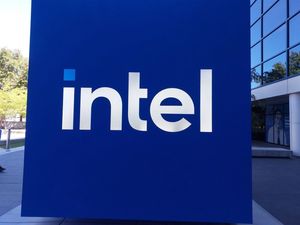Fully open source model accurately predicts the 3D structures of proteins and biomolecules in silico, and serves as a foundational model for next generation of cutting-edge Protein AI tools
The OpenFold Consortium, a leading nonprofit artificial intelligence (AI) research consortium, today announced a preview release of OpenFold3, an open-source deep learning model that predicts three-dimensional structures of complex proteins and their interacting molecules with high accuracy. Trained on more than 300,000 publicly-available, experimentally determined structures, and an OpenFold-curated synthetic database of over 13 million structures, OpenFold3 provides the underpinning to significantly accelerate in silico screening of biomolecules and serves as a foundation model for next-generation protein AI tools across drug discovery, enzyme and biosensor design, and biomaterials development.
OpenFold3 predicts how a protein folds into its three-dimensional structure, using only its amino acid sequence as input. This preview release of OpenFold3 is a major leap forward in capability, with the added ability to predict structures of proteins interacting with other molecules, including small molecule ligands and nucleic acids, which together account for the majority of drugs on the market. By accurately modeling protein structures and molecular interactions in silico, OpenFold3 enables faster and more cost-effective advances in drug discovery and materials science R&D. OpenFold3 was built by a team of industry and academic researchers led by the AlQuraishi Lab at Columbia University, the Bioresilience Program at Lawrence Livermore National Laboratory, and the Steinegger Lab at Seoul National University. It will serve as a foundation model for a wide range of uses across diverse industries.
“Democratizing state-of-the-art foundation models for biology is essential to unlocking their full potential in industry,” said Woody Sherman, Chief Innovation Officer at Psivant Therapeutics and OpenFold Consortium Executive Committee Chairperson. “By engaging a global community of researchers and practitioners across biotech, pharma, and academia, the OpenFold Consortium can focus on the most pressing real-world challenges and continue to raise the bar for the entire field.”
A key advantage of OpenFold3 is its Apache 2.0 license for all software components. Unlike AlphaFold3, which is available for limited academic use and not licensed for industry applications, OpenFold3 allows all users to test the model, train it with new datasets, develop new applications, and adapt the model, which is not possible with partially open-source AI models.
“OpenFold3 brings all of this new functionality and makes it available to everyone,” said Brian Weitzner, Director of Computational and Structural Biology at Outpace Bio, and Co-founder of the OpenFold Consortium. “This new model is so powerful and well-architected that it will serve as a foundation model for other protein AI tools to build upon for years to come.”
“The launch of OpenFold3 embodies the sharing ethos of the OpenFold Consortium,” said Cyrus Biotechnology Co-Founder and CEO Lucas Nivon, who co-founded the OpenFold Consortium in 2022. One key aim of building OpenFold3 through an industry consortium was to pool resources across the industry to minimize overlap in the development of foundational models with the potential for wide use. “Our goal is that OpenFold becomes the standard in academia and industry, similar to how Linux has functioned for tech,” said Nivon. “This is just the beginning.”
Real-World Use Cases for Real-World Impact
OpenFold3’s capabilities and features are well suited to biopharma and other fields where proteins hold sway. The model predicts co-folding, such as the structure of a protein bound to a drug molecule and can be used within a protein design pipeline to test structures for designed protein sequences created by inverse folding tools such as ProteinMPNN.
Major commercial enterprises have already committed to leveraging OpenFold3 to accelerate R&D for new therapies and products. At Novo Nordisk, scientists will adapt the model to internal pipelines and proprietary data to support the discovery of new therapeutics. Outpace Bio will use the model to help generate new cell therapies engineered with specialized molecular circuits. At Bayer Crop Science, researchers will apply OpenFold3 to study proteins from plants, weeds, and pests, accelerating the development of new crop protection molecules and traits. Cyrus Biotechnology will use the model to design new enzyme-based drugs for autoimmune disease.
“Being able to predict the structure of a ligand bound to its target has broad implications across the R&D value chain, helping guide the selection of better targets, accelerating molecular design and optimization, and informing patient stratification in the clinic,” said Peter Clark, Vice President of Digital Chemistry & Molecular Design at Novo Nordisk and Executive Member of OpenFold Consortium. “Access to an open-source model that can be used, adapted and advanced by the broader community, catalyzes our commitment to delivering better medicines to patients, faster with reduced cost.”
“OpenFold3 allows us to fine-tune the model with internal data to accelerate discovery pipelines across our Crop Science and Pharmaceutical Divisions. The open-source nature enables us to incorporate OpenFold3 into our internal innovative pipelines and enables others in the field to build, innovate, and share their work to further accelerate biomolecular AI research for all,” said Christina Taylor, Senior Science Fellow and Computational Molecular Design Lead at Bayer Crop Science and Executive Member of the OpenFold Consortium. “OpenFold3 will enable state-of-the-art modelling of diverse proteins, as well as their interactions with ligands and other biomolecular molecules to accelerate the development of new crop protection molecules and traits,” added Taylor.
Scalable Technology for Improved Usability and Future Growth
OpenFold3 was built with PyTorch, and is available at NVIDIA NIM (NVIDIA Inference Microservices), a containerized, accelerated API deployable anywhere for inference at scale. This design enables high-speed performance to operate swiftly while minimizing the use of computing resources.
“With OpenFold3, we’re making biomolecular modeling adaptable and extensible: a platform that can learn from new data, integrate into diverse pipelines, and accelerate discovery across biology,” said Nazim Bouatta, scientific co-leader of OpenFold3.
“OpenFold3 is modular and built for usability, allowing biopharma and materials science companies to modify the model so it can interpret their data in its native format, not the other way around,” added Mohammed AlQuraishi, Assistant Professor of Systems Biology at Columbia University. “This unparalleled flexibility further lowers the barrier to entry and will greatly accelerate adoption without over burdening data scientists or straining IT teams.”
“We've taken learnings from our past projects and focused on making OpenFold3 significantly more modular and configurable to a variety of workflows. We've designed it to be a tool that industry and academic researchers alike can plug directly into their own projects, and we're excited to see what the community builds with it,” said Jennifer Wei, technical co-leader of OpenFold3.
This approach is already being demonstrated with an upcoming open-source initiative announced in June by the U.K. government called OpenBind. The OpenBind initiative will fine-tune OpenFold3 using data generated by its collaborators. In parallel, the AI Structural Biology (AISB) Network is training OpenFold3 on proprietary data of multiple large pharmaceutical companies. Additional synergistic initiatives within the Open Molecular Software Foundation (OMSF), of which OpenFold is a project, include atomistic molecular simulations and ADMET predictions. Together, these initiatives highlight the expanding ecosystem around OpenFold3 and its role as a shared foundation for future model development.
“SandboxAQ is proud to collaborate with the OpenFold consortium and contribute our AI expertise, industry insights, and proven technologies to enhance the technical capabilities of OpenFold3,” said Andrea Bortolato, VP of Drug Discovery at SandboxAQ. “By democratizing access to cutting edge AI technologies, tools, and data, OpenFold is helping disrupt and transform traditional drug discovery and materials science processes and remove many of the risks and barriers that stifle innovation.”
OpenFold Consortium members and industry partners contributed to the development of OpenFold3 through funding, computational resources, and scientific expertise which were essential to the success of OpenFold3.
“The OpenFold 3 development exemplifies how Amazon Web Services (AWS) high performance computing Cloud infrastructure and generative AI model development platforms enable cutting edge data science and the delivery of the state-of-the-art protein foundation models much faster and at optimized cost,“ said Dr. Boris Bogdan, Director of Life Sciences. “By working alongside Novo Nordisk, Columbia University, and the broader research community, we've supported the creation of a truly open-source model that will enable researchers everywhere to advance protein structure prediction and accelerate drug discovery and development. AWS is always eager to further help all consortia to advance AI model development for Life Sciences.”
A full list of consortium members and their contributions is available at openfold.io, and member quotes and testimonials can be found on the OpenFold blog. You can access the preview of OpenFold3 code on Github, Docker image and model checkpoint through HuggingFace, and interface hosted versions through OpenFold Consortium partner, Tamarind Bio and a locally deployable version through OpenFold Consortium partner Apheris.
About OpenFold
OpenFold is a nonprofit AI research consortium of academic and industry partners whose goal is to develop free and open-source software tools for biology and drug discovery, hosted as a project of the Open Molecular Software Foundation (OMSF). Membership is encouraged among Biotech, Pharma, Synthetic Bio, Software/Tech, and non-profit research organizations.
For more information about OpenFold Consortium and its initiatives, please visit: OpenFold Consortium.
View source version on businesswire.com: https://www.businesswire.com/news/home/20251028507233/en/
Contacts
Media Contact: Mallory Tollefson: mallory.tollefson@omsf.io






